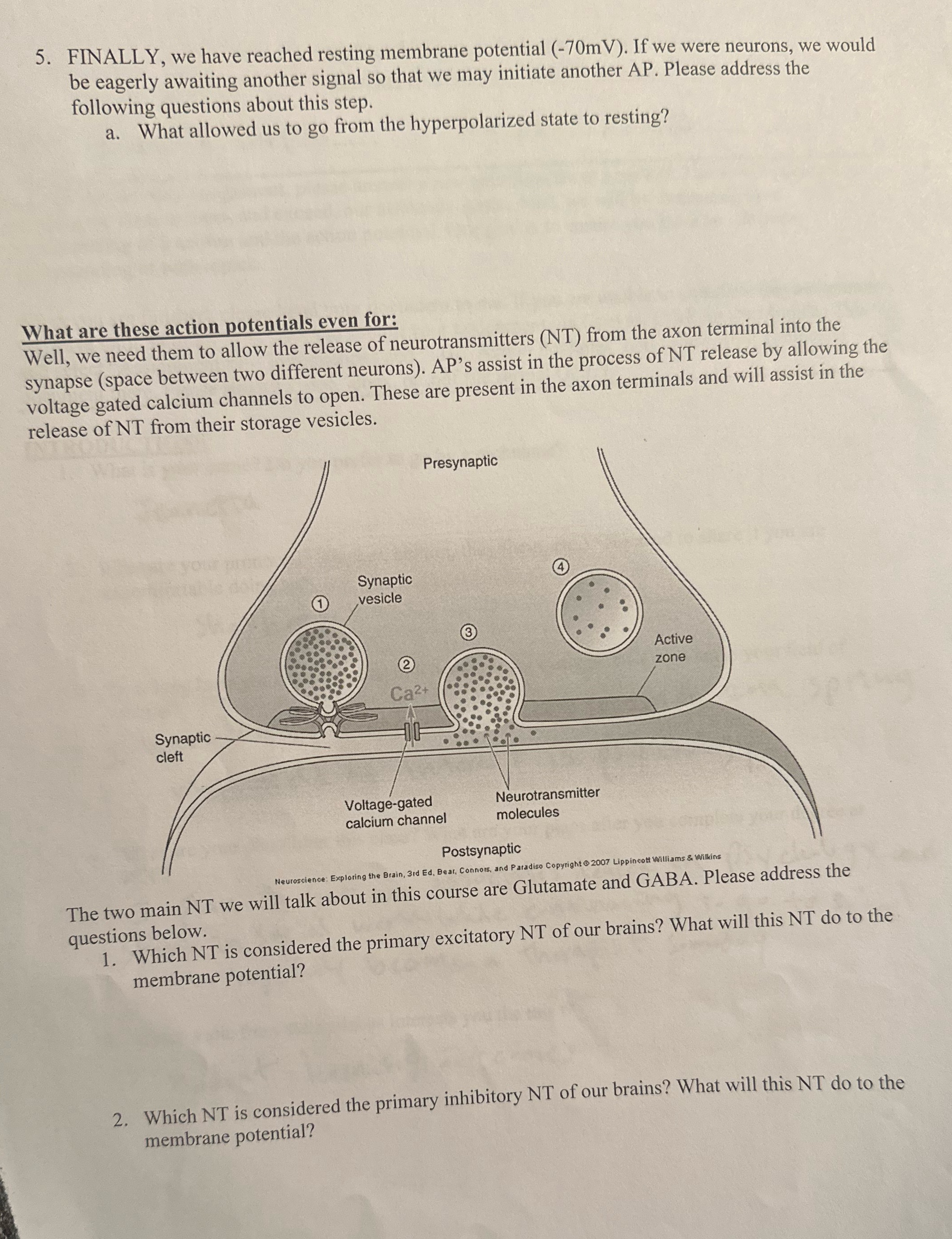Answered step by step
Verified Expert Solution
Question
1 Approved Answer
5. FINALLY, we have reached resting membrane potential (-70mV). If we were neurons, we would be eagerly awaiting another signal so that we may

5. FINALLY, we have reached resting membrane potential (-70mV). If we were neurons, we would be eagerly awaiting another signal so that we may initiate another AP. Please address the following questions about this step. a. What allowed us to go from the hyperpolarized state to resting? What are these action potentials even for: Well, we need them to allow the release of neurotransmitters (NT) from the axon terminal into the synapse (space between two different neurons). AP's assist in the process of NT release by allowing the voltage gated calcium channels to open. These are present in the axon terminals and will assist in the release of NT from their storage vesicles. Synaptic cleft Synaptic vesicle Presynaptic Ca2+ . Active zone Voltage-gated calcium channel Neurotransmitter molecules Postsynaptic Neuroscience: Exploring the Brain, 3rd Ed, Bear, Connors, and Paradiso Copyright 2007 Lippincott Williams & Wilkins The two main NT we will talk about in this course are Glutamate and GABA. Please address the questions below. 1. Which NT is considered the primary excitatory NT of our brains? What will this NT do to the membrane potential? 2. Which NT is considered the primary inhibitory NT of our brains? What will this NT do to the membrane potential?
Step by Step Solution
There are 3 Steps involved in it
Step: 1

Get Instant Access to Expert-Tailored Solutions
See step-by-step solutions with expert insights and AI powered tools for academic success
Step: 2

Step: 3

Ace Your Homework with AI
Get the answers you need in no time with our AI-driven, step-by-step assistance
Get Started


